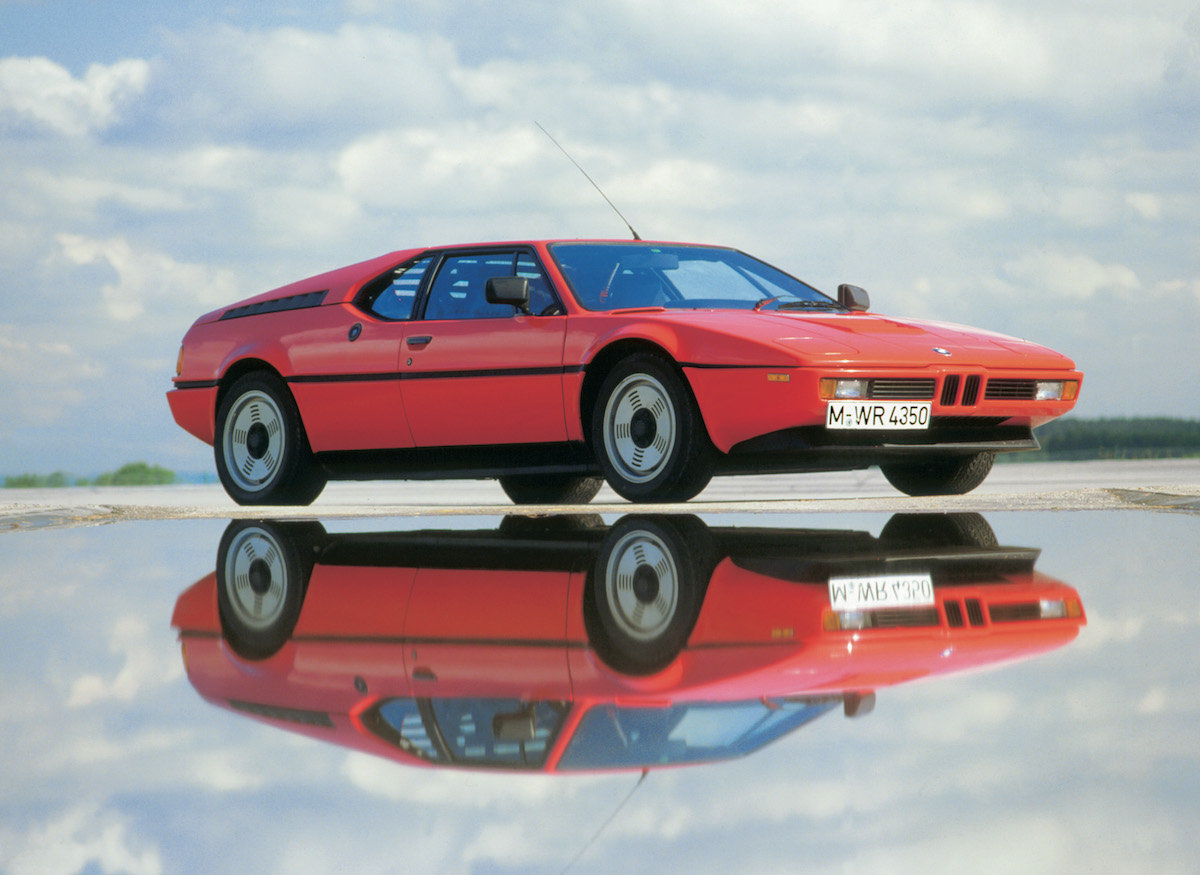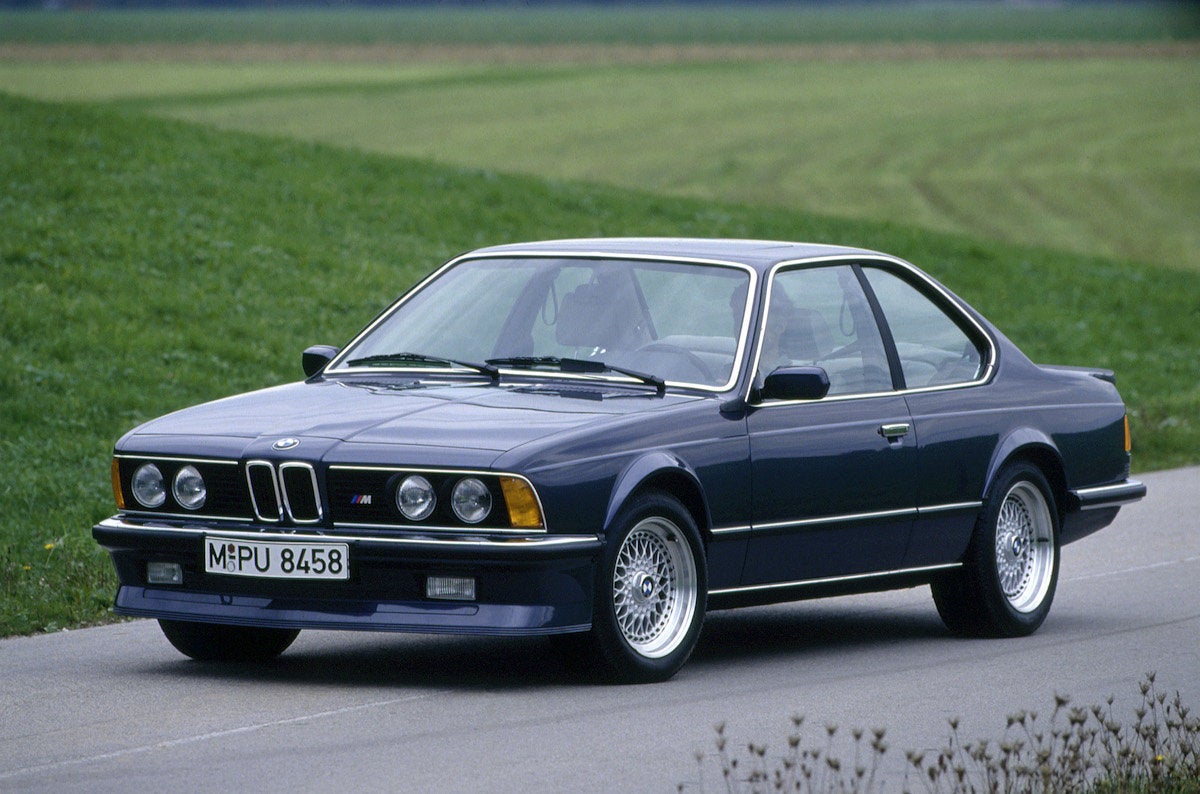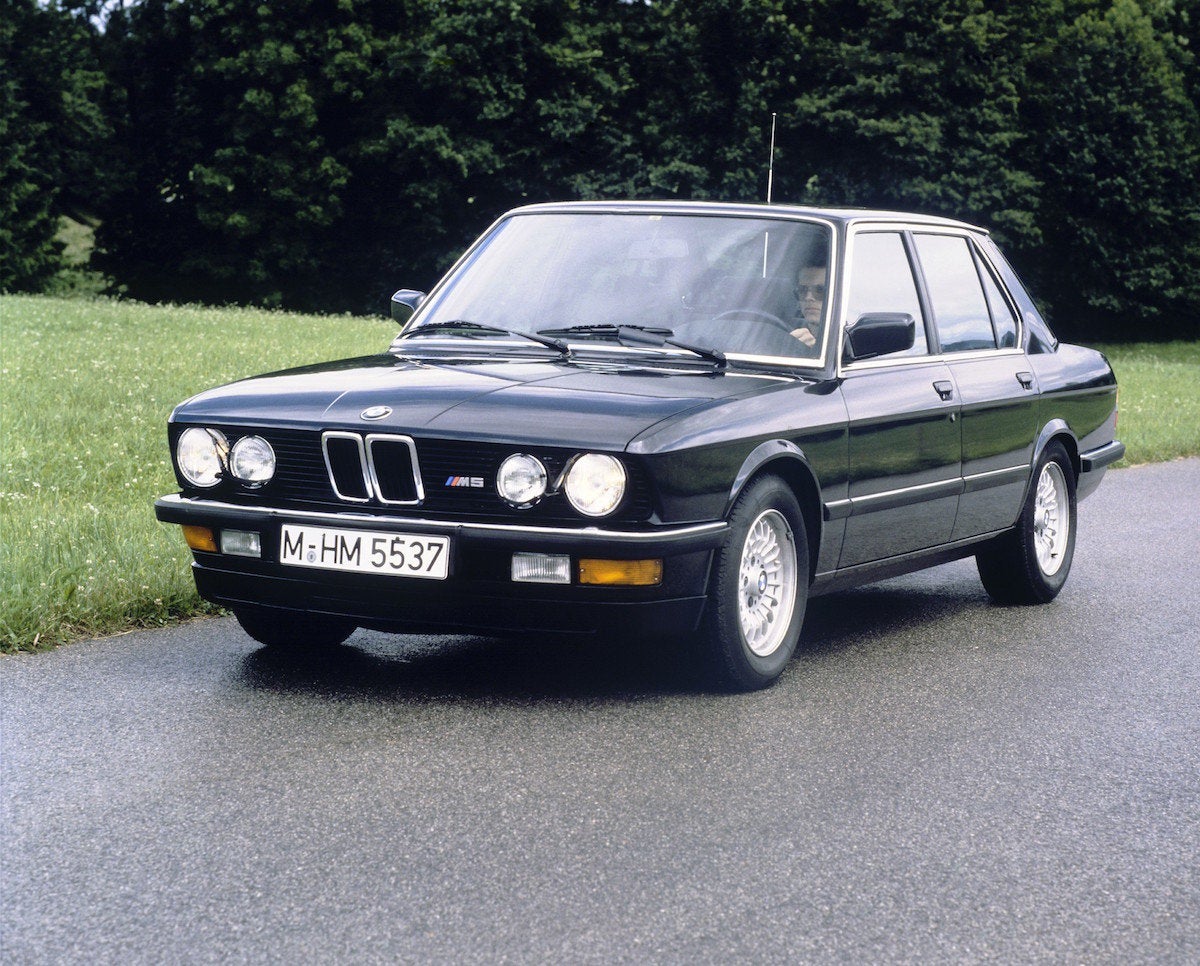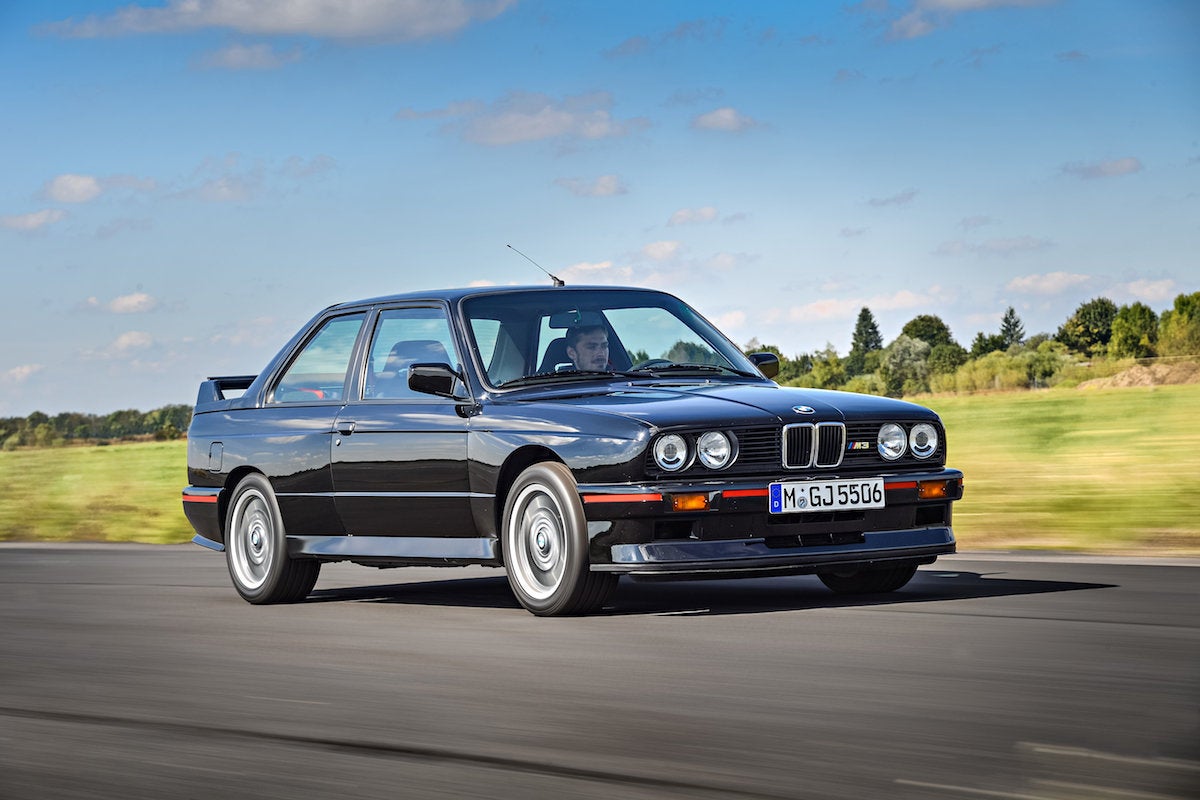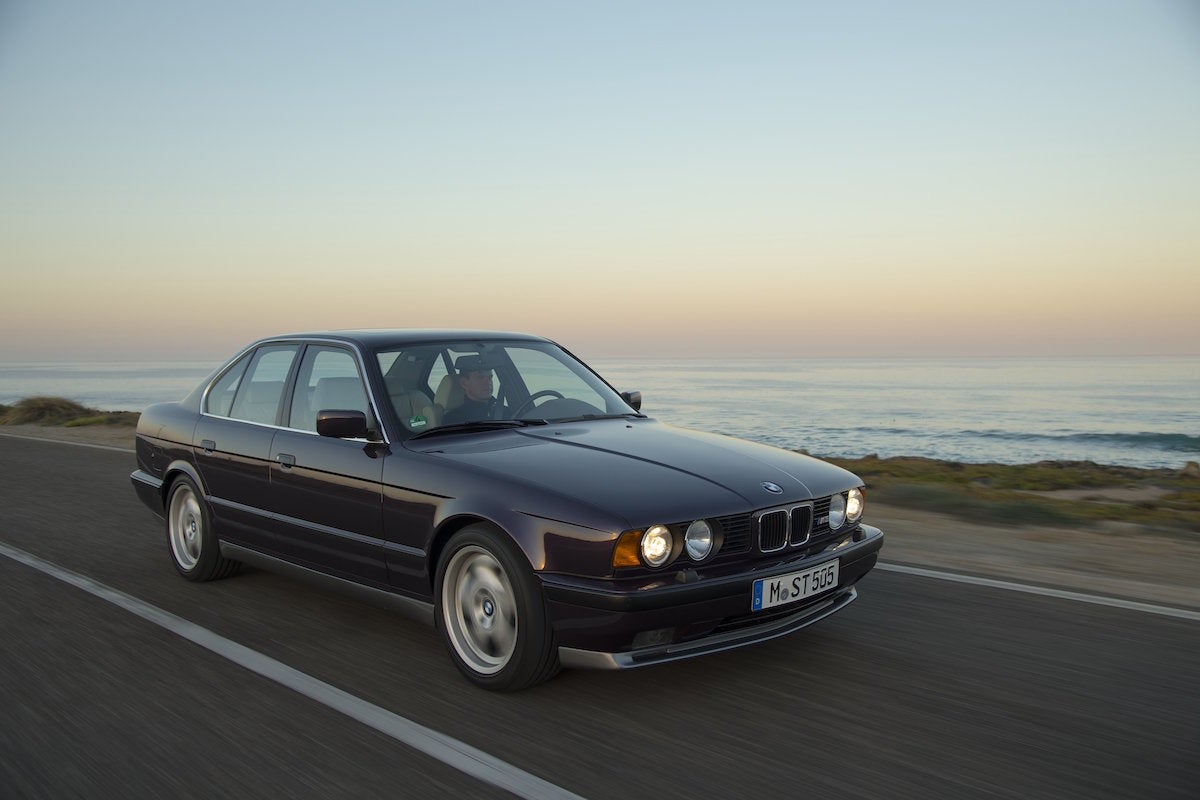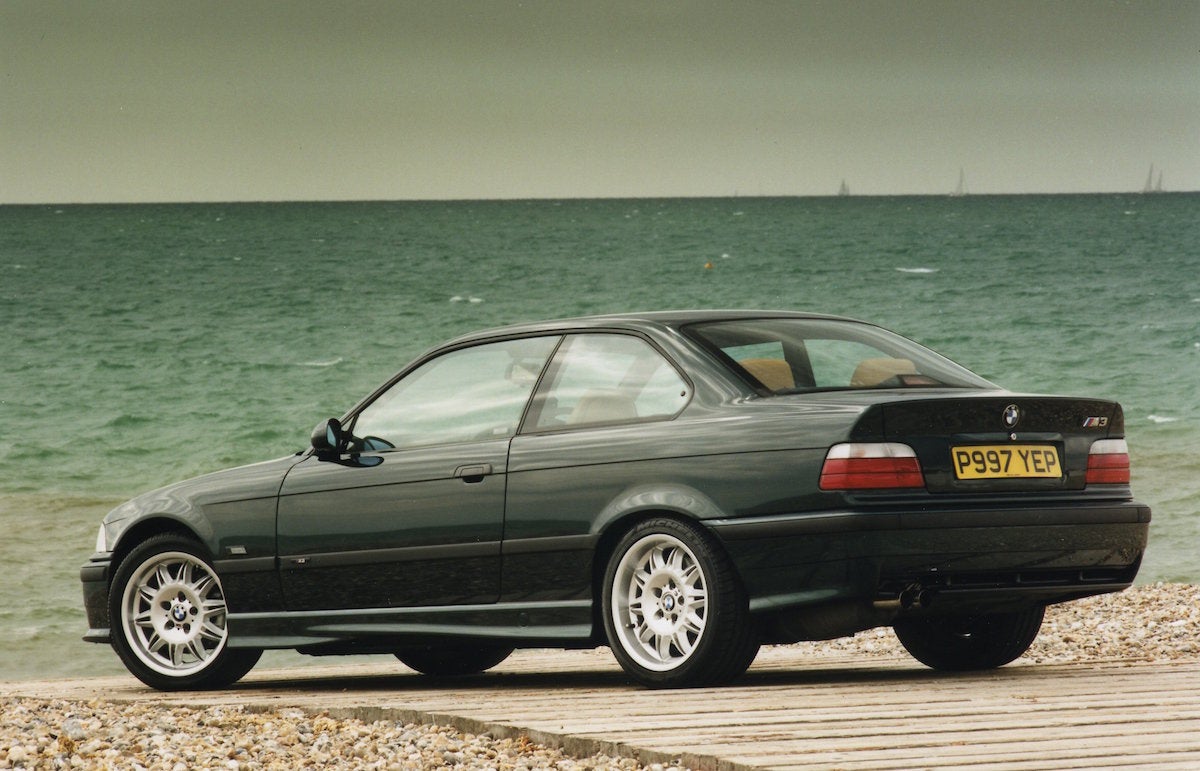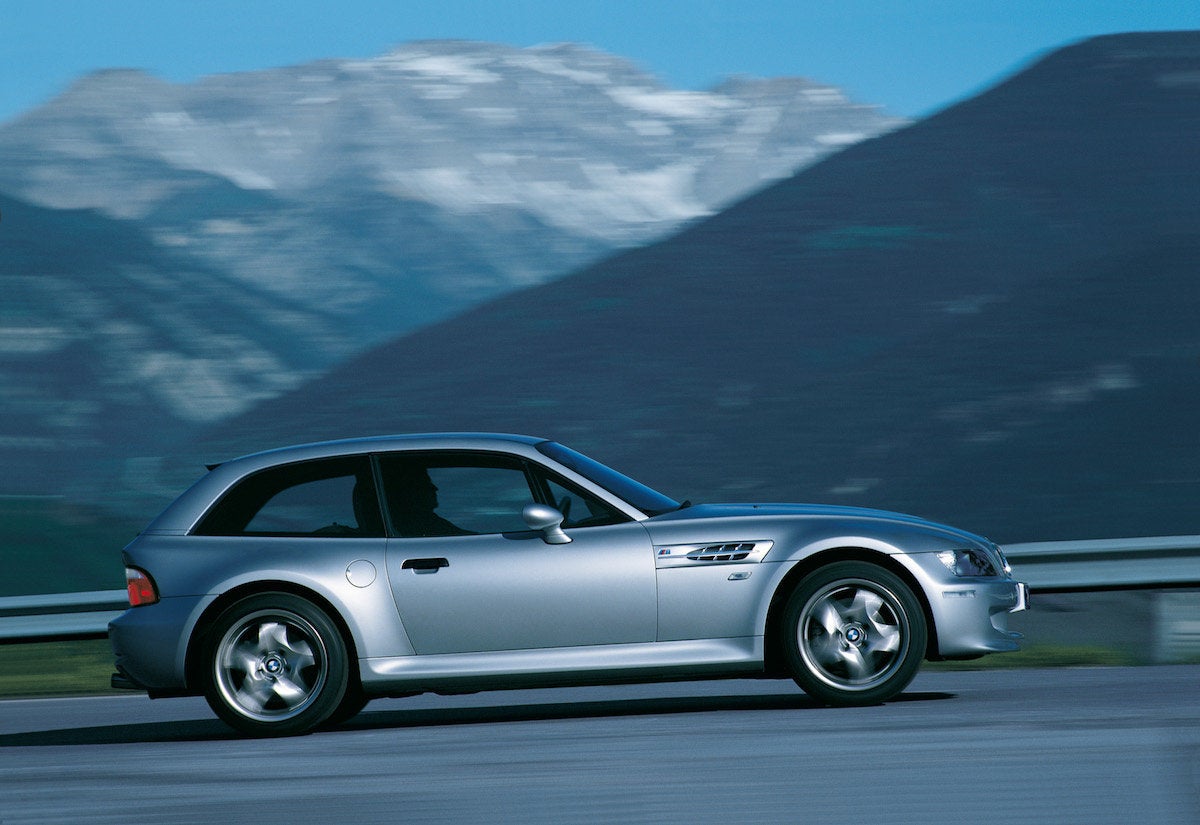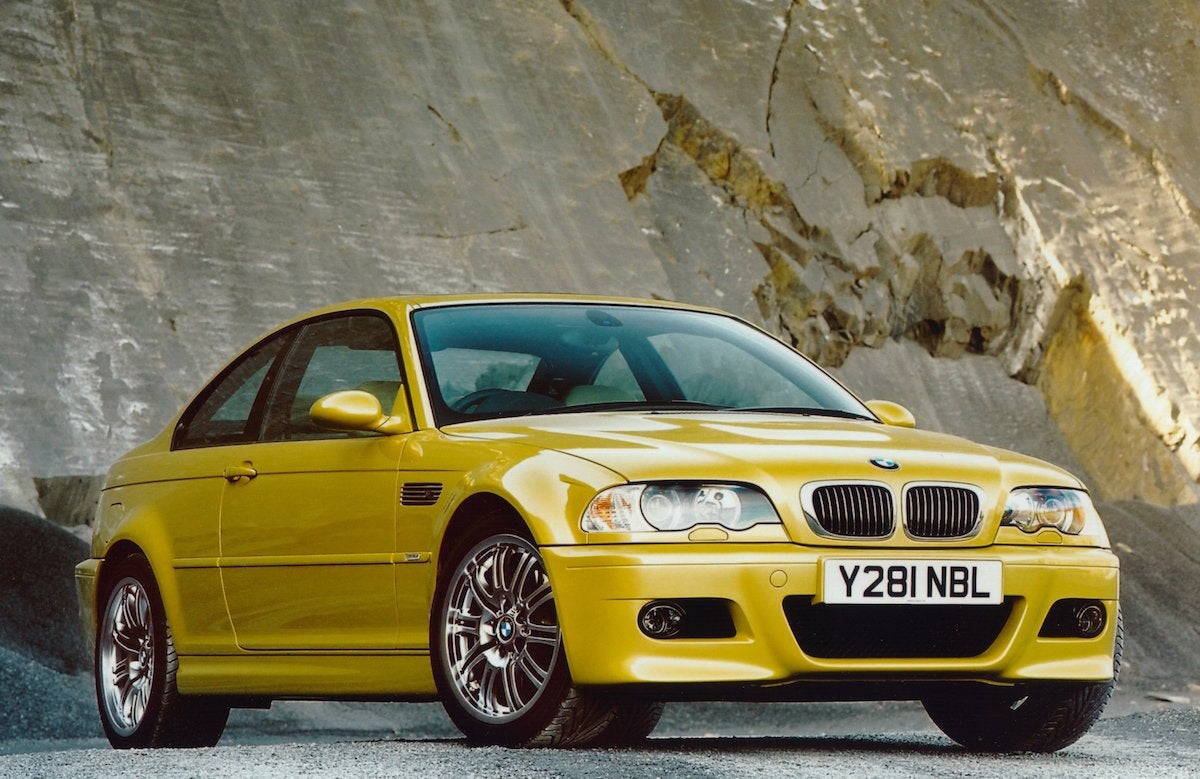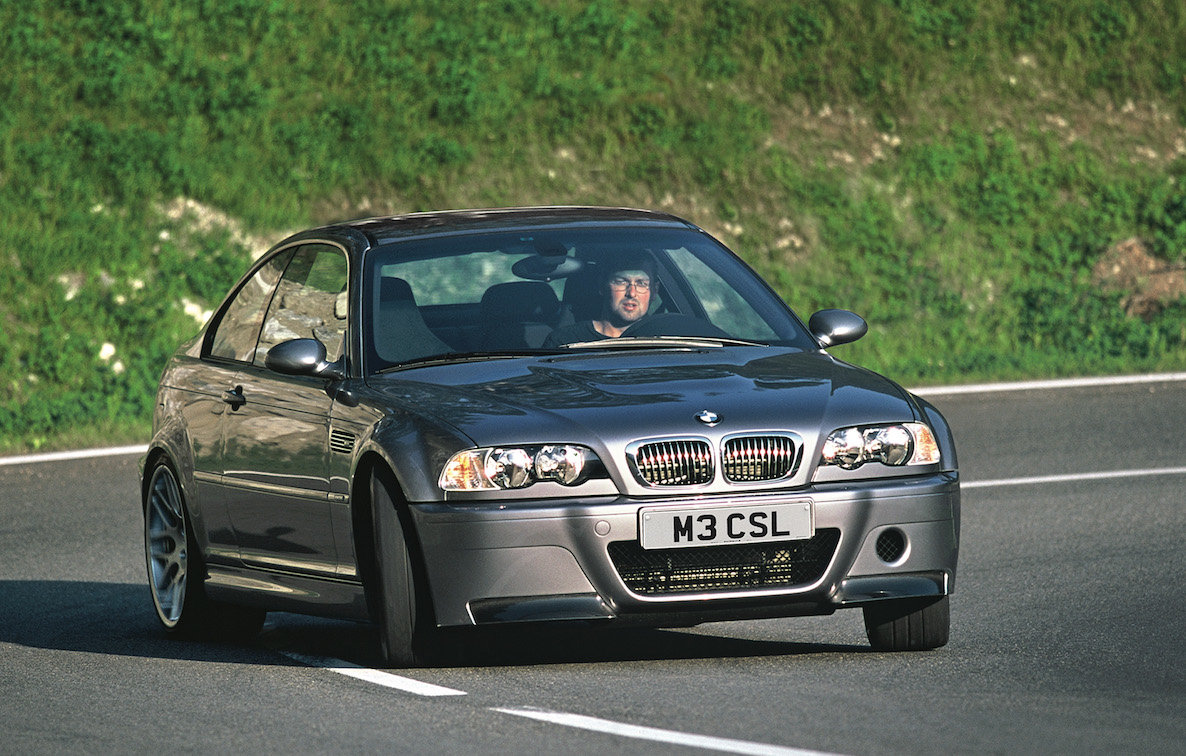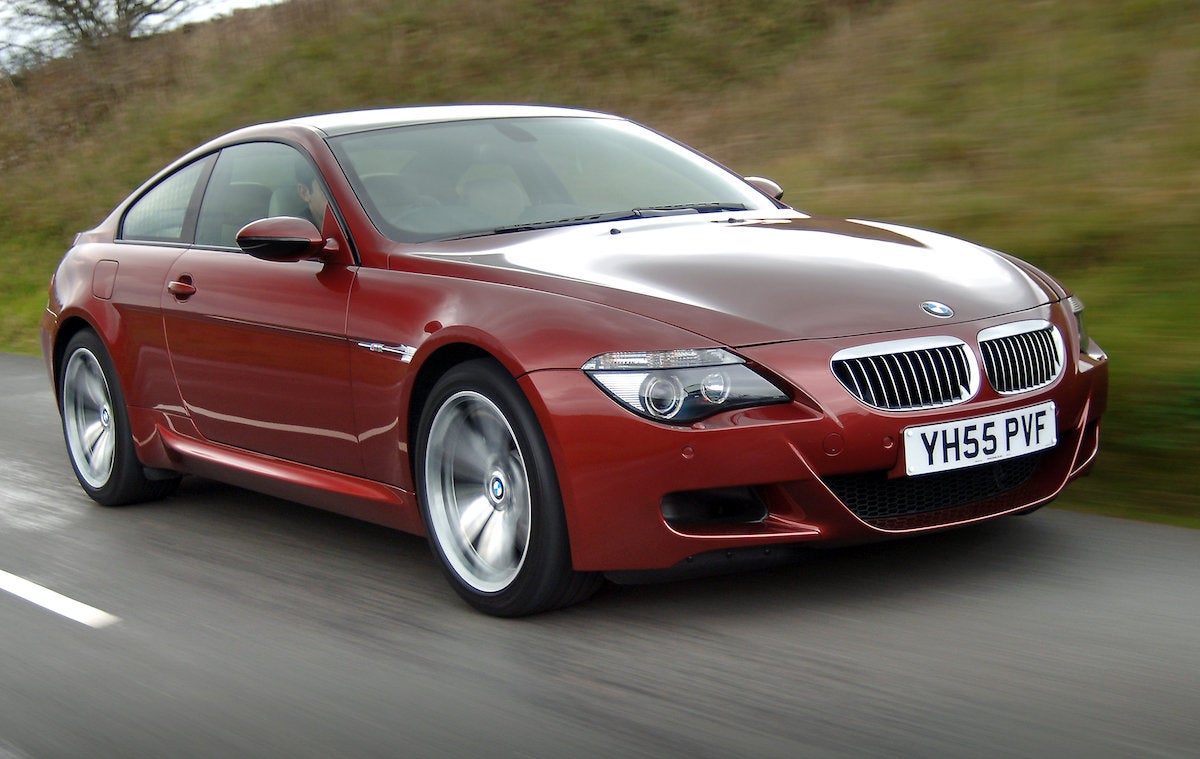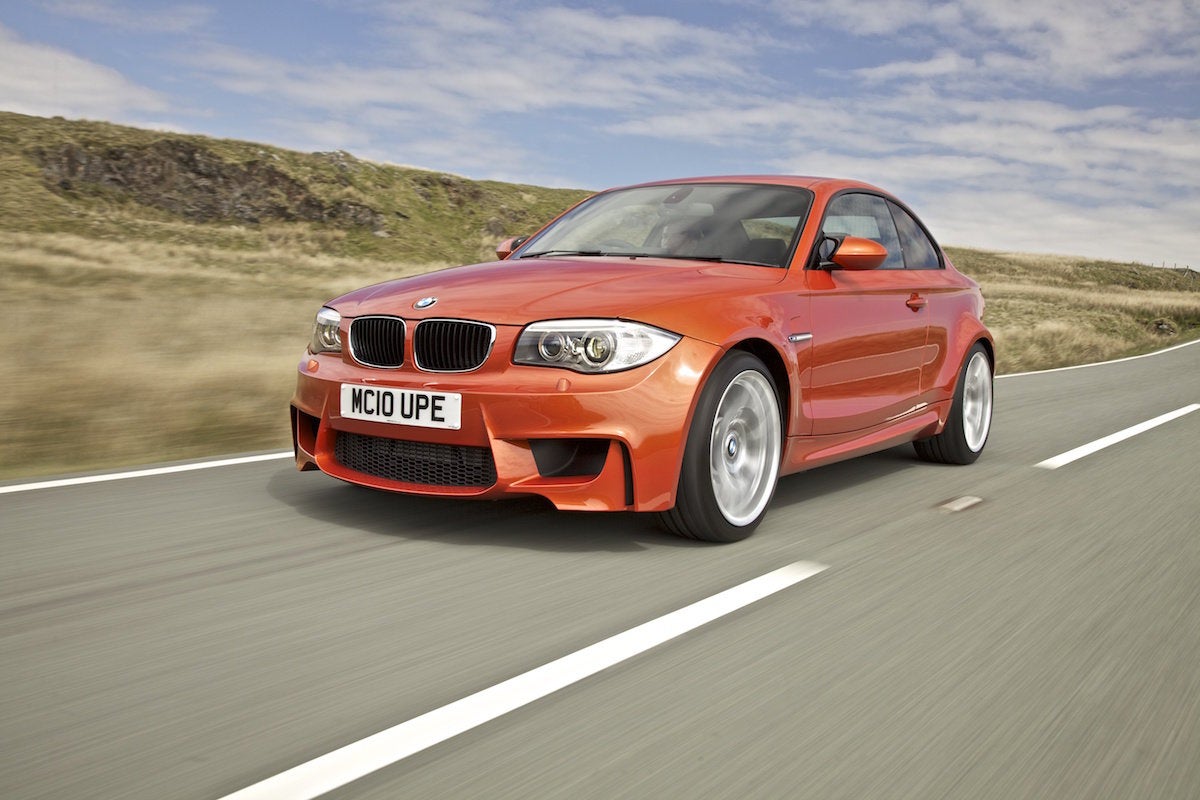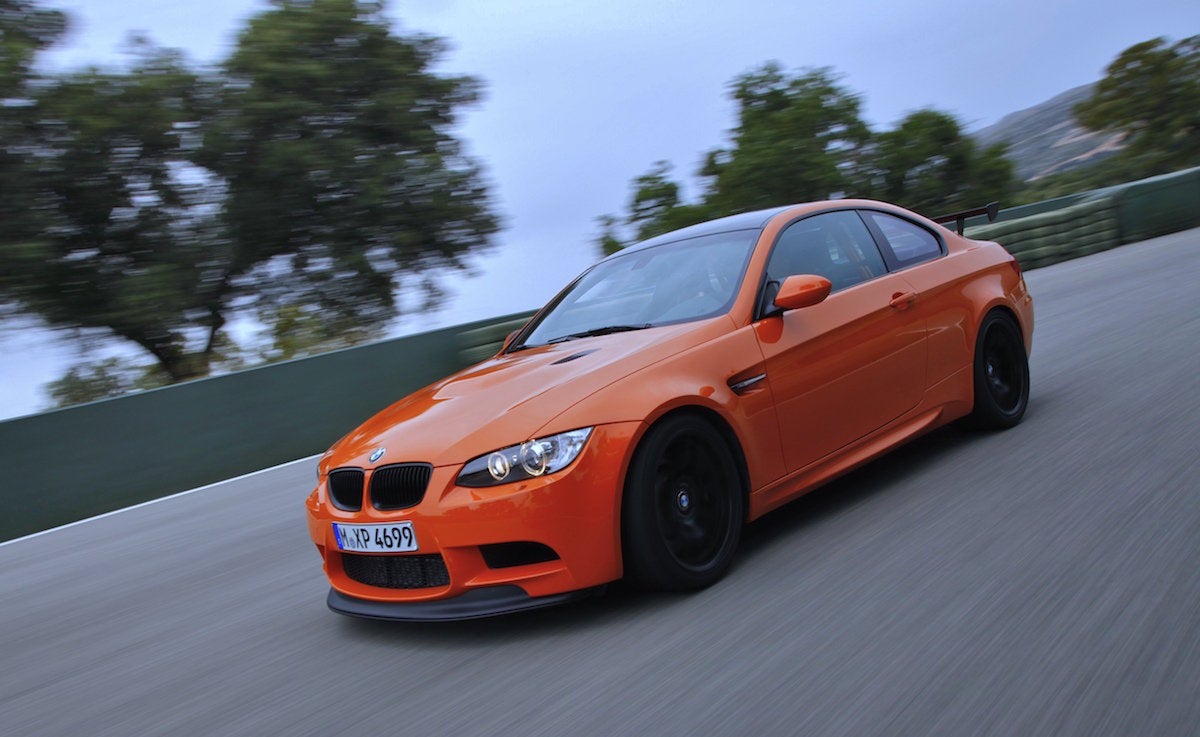For more than 40 years, BMW's M division has been at the forefront of the German performance car scene. Its Bavarian factory has produced a wide range of finely-honed and fettled machinery that serves to reflect glory on the more mundane models in the line-up, and almost every single one of them has been an absolute cracker.
The M Division’s most famous creations – the BMW M1 and the E30 M3 – might have had their roots in motorsport, but since then, BMW’s M cars have taken a step back from the track to establish themselves as consummate all-round sports cars. The ultimate driving machines, as BMW modestly calls them in its advertising. They stand out for their duality of purpose, being perfectly at home with mundane every-day journeys, but coming alive with stunning performance and deft handling when called upon. Audi has its RS models and Mercedes-Benz has its AMGs, but BMW M reckons M is the most powerful letter in the world.
Read on to discover our choices for the 15 best M cars ever made.
The Best BMW M Cars
- BMW M1 E26 (1978-1981)
- BMW M635CSi E24 (1984-1989)
- BMW M5 E28 (1984-1987)
- BMW M3 Coupe E30 (1986-1990)
- BMW M5 E34 (1988-1995)
- BMW M3 Evo E36 (1995-1999)
- BMW Z3 M Coupe (1998-2002)
- BMW M5 E39 (1998-2003)
- BMW M3 E46 (2000-2006)
- BMW M3 CSL E46 (2003)
- BMW M6 E63 (2005-2010)
- BMW 1 Series M Coupe E82 (2011-2012)
- BMW M3 GTS E92 (2010-2011)
- BMW M2 CS F87 (2020-2021)
- BMW M5 CS G30 (2022-)
BMW M1 E26 (1978-1981)
As the first ever M-powered car to emerge from the car maker's hallowed halls, and the only mid-engined M-car in BMW’s history, the M1 had a huge weight of expectation on its delicate Giugiaro-styled shoulders. Fortunately it drove as well as its sublime looks suggested. Originally designed for Group 4 racing, it had a long gestation period. By the time the M1 was ready for the track, homologation requirements had changed, leaving the M1 all dressed up with nowhere to race. Keen for its all-new supercar to be seen in action, BMW devised the ProCar series, where 470bhp racing versions were raced by F1 drivers at selected Grand Prix weekends. Could it have been the world’s greatest one-make series?
Powered by the M88 3.5-litre straight-six derived from BMW’s CSL ‘Batmobile’ race cars, it developed 273bhp in road-going trim and sounded divine, with a glorious banshee wail when on song. Performance was on a par with its V12-engined Italian contemporaries. Where the M1 really scored, though, was with a supple ride, limpet-like grip (by the standards of the day) and delicate balance. It was practical, too, with a reasonable boot and mod cons like air conditioning. Just 399 road cars were made, all with left-hand drive.
BMW M635CSi E24 (1984-1989)
Once the M1 had ceased production, BMW had a glorious race-proven inline-six sitting on the shelf gathering dust. What better home for it than its range-topping 6 Series coupe? BMW’s svelte two-door was already a strong performer, but with a revised version of the 24-valve six-cylinder under its bonnet – now offering 282bhp and 251lb ft of torque – it was a genuinely fast car with a top speed nudging 160mph.
As with all M cars, there was more to the M635CSi than just an enhanced powerplant; the suspension was thoroughly revised with bespoke springs and dampers, larger discs with four-piston callipers and larger wheels and tyres were fitted, too. There were subtle styling changes, with a deeper front air dam and a smattering of the tricolour M badges that now adorn so many of BMW’s M Sport models.
It might not have had quite the poise and delicacy of some later M cars, and it could be unruly in the wet, but the M635CSi was packed with old-school charm and character, and was wrapped up in a body that epitomised what BMW cars should look like. In total 5,855 were manufactured with just 524 of those in right-hand drive.
BMW M5 E28 (1984-1987)
The first BMW M5 might not have been the original Q-car, and it certainly wasn’t the first four-door saloon to offer effortless performance, but it virtually set in stone what we now expect from the super saloon genre. In its day it offered more performance than a Ferrari Mondial yet had the space to accommodate five adults and their luggage, all wrapped up in a sober three-box saloon design. It could even be ordered without spoilers or badges for the ultimate in stealthy performance.
It utilised the same running gear as the contemporary M635CSi, yet it wasn’t just the M5's performance that secured its place in the pantheon of greats; it was its all-round ability that really won over hearts and minds. It had the docility of a family saloon that made it at ease on the school run, but away from mundane duties its Mr Hyde persona shone through, the soulful howl of its straight-six ringing in your ears with every cog swap of its manual transmission while you revelled in its deft handling balance. Just 2,241 were made and only 187 with right-hand drive.
BMW M3 Coupe E30 (1986-1990)
Often awarded the accolade of being the best ever M car, the BMW M3 is living, revving proof that racing does indeed improve the breed. With its purposeful blistered arches, an iconic four-cylinder 16-valve S14 engine and a bespoke chassis set up, the E30 M3 was designed to win Touring Car championships. And it did so in spades.
The M3 might have borne a passing resemblance to the standard BMW 3 Series but every panel bar the bonnet and the doors were bespoke and changes under the skin were similarly extensive. Along with the race-bred engine came a five-speed dog-leg gearbox and a limited slip differential, while those wheel arches were essential for a wider track and springs and dampers that were unique to the model.
Power ranged from 192- to 235bhp, but it wasn’t the E30 M3’s outright speed that impressed – at lower revs it could seem somewhat gutless – but head north of 5,000rpm and it sings all the way to its 7,000rpm limiter. Even more impressive is its telepathic steering and balanced chassis. It turns in with alacrity and its attitude can be delicately fine-tuned by the throttle. Even today it’s still revered for its poise and focus. BMW needed to make 5,000 for homologation requirements but the M3 was such a success that it sold 17,184 examples.
BMW M5 E34 (1988-1995)
If the E28 version of the M5 set the template for the genre, the second-generation E34 model further distilled and refined the concept. Initially available with a slightly larger version of the original car’s straight-six that now offered 311bhp, it was the later 3.8-litre with 335bhp (launched late in 1991) that secured the E34’s place in BMW M’s greatest hits parade. With more horsepower, the 3.8 had the firepower needed to bring the chassis alive, and even though the E34 was the last mainstream BMW saloon to use the oft-maligned semi-trailing arm rear suspension, here it was perfected to be both safe and entertaining. The additional torque of the 3.8 made for less frenetic progress, but use all the revs and the big six was still a joy to pedal fast. Its split personality was enhanced by electronic dampers that were softer when pottering or cruising and firmer when on a charge, making it one of BMW’s best grand tourers.
In some ways the E34 M5 signified the end of an era – its engine was the largest straight-six ever made by the company, with future generations of M5 utilising V8s or V10s – and it was also the last of the hand-built M cars. In total BMW M manufactured 12,254 E34 M5s of all types, but just 343 of those were the 3.8 in right-hand drive.
BMW M3 Evo E36 (1995-1999)
You could be forgiven for believing conventional wisdom that says the E36 generation of M3 didn’t cut the mustard, but to do so would be to miss out on what, in Evolution form, is a superb driver’s car. Replacing the E30 M3 was always going to be a tough ask and with no homologation requirements or competition pedigree the E36 was a softer, more rounded machine. The original E36 M3 had a cracking 3.0-litre straight-six engine, but its steering wasn’t a patch on the E30s and it lacked the fluidity of the earlier car.
Perhaps stung by this criticism BMW M launched the Evo version, with myriad changes to the suspension and steering along with an enlarged 3.2-litre version of the S50 engine. Rated at 317bhp, its metric power figure was 321 horsepower making it the first road-legal BMW engine to break the magic 100hp/litre figure, and it sounded even better than its impressive vital stats would suggest.
Complementing the revitalised power unit was a suspension and steering set up that elevated the E36 M3 to greatness. The faster steering rack gave immediacy to its turn-in behaviour while its revised springs and dampers worked in harmony with increased front castor settings to make the Evo an entertaining steer. It was hugely popular, too, with nearly 42,000 M3 Evos produced.
BMW M3 E36 Review
Search for a BMW M3 E36 on CarGurus
BMW Z3 M Coupe (1998-2002)
Not only is the Z3 M Coupe the most outlandish BMW M car ever made, it could be the wildest machine in BMW’s history. Perhaps even more bizarrely, the Z3 M Coupe wasn’t even a model that was destined for production, but was built as a skunkworks project to prove that it was possible to add some much needed torsional rigidity to the rather wobbly Z3 Roadster.
Often dubbed the ‘Breadvan’ or rather unkindly the ‘Clown Shoe’, the M Coupe had a very distinctive shape with widely flared wheel arches, especially at the rear, to cover the widened track and monster alloys. Once the E36 M3 Evo’s 3.2-litre straight-six had been shoehorned under the bonnet, it was an exceptionally rapid machine. It was a challenge to drive fast, though, with a tendency for the front end to go light at speed while the rear suspension, borrowed from the 3 Series Compact, struggled to keep the back wheels following vaguely in the direction of those at the front.
Despite its spiky handling it’s a hugely rewarding car to drive fast once you’ve mastered it, and today they’re coveted machines, especially the last-of-the-line models, which featured the E46 M3’s engine. Just 6,291 examples were made, and less than a 1,000 were right-hand drive.
BMW M5 E39 (1998-2003)
When it was a new car, the E39 generation of BMW 5 Series was often touted as being the ‘best car in the world’ by the motoring press. So it’s not difficult to make a case for the high-performance M5 version being the ultimate super saloon, and nearly two decades after its demise it’s still held in high regard. Blend the style, comfort and sophistication of the standard 5 Series luxury car with a 394bhp 5.0-litre M Power V8 engine and you have the makings of automotive nirvana.
Subtle styling secured its Q-car credentials, yet there were just enough exterior cues for those in the know to identify the ultimate 5 Series. Revisions under the skin included reworked suspension and stiffer bushings, yet the M5 still rode brilliantly, soaking up dips, crests and ruts with very little fuss. Its cockpit was plusher than in previous generations and it was the first M car to feature stability control as standard, along with the now familiar Sport button to sharpen up its throttle response.
But it was the car’s inherent balance, brilliant body control and rear-wheel drive handling balance, which could turn even the most ham-fisted driver into an oversteer hero, that made it such a winning combination. Its outstanding ability won it plenty of admirers: 20,482 of them worldwide, with 2,595 examples coming with right-hand drive.
BMW M3 E46 (2000-2006)
If the E39 M5 is the car that super saloons are judged by then the contemporary E46 generation of M3 could well be the template for two-door sports cars. It's small enough to thread down a favourite backroad yet large enough to seat five (just) and accommodate their luggage while offering a sublime driving experience.
Launched in late 2000, the M3 had a sensational engine – a thoroughly reworked, 338bhp version of the unit from the E36 M3 – with enough power for a 5.1 second 0-62mph time. Tractable and docile at low revs, it really sang when extended with a shrill zing to it the higher you ventured up the rev range. And while the engine was a jewel, it was the M3’s chassis that really shone, offering precision and exquisite feedback through the hydraulically assisted steering.
Two gearboxes were offered – a six-speed manual or an automated version known as the Sequential Manual Gearbox (SMG) – but it’s the former that makes the car, adding a layer of interaction and involvement missing from the flappy paddle version. Perhaps the ultimate E46 is the CS version, which utilised parts from the CSL without spoiling the car’s everyday usability. Overall the E46 M3 was the best-selling M3 to date with 85,766 examples produced.
BMW M3 E46 Review
Search for a BMW M3 E46 on CarGurus
BMW M3 CSL E46 (2003)
Reusing an iconic name from the past can be fraught with danger, but when BMW's M division announced the E46 M3 CSL – Coupe Sport Lightweight – as a homage to the 1970s Batmobile Coupe, it knew that it had a car worthy of the name. This was an E46 M3 with the wick turned up high. It saw the first use of the now de rigueur carbon-fibre roof, and along with further use of the lightweight material, BMW managed to shave 110kg from the E46’s kerb weight. The already impressive straight six was tweaked to elicit an additional 17bhp but it was the fitment of a carbon fibre air intake that was its real party piece, endowing the CSL with an otherworldly induction roar, with orchestral overtones all the way from tickover to the 8,000rpm red-line.
Sharper steering, revised suspension and Cup tyres made it a devastatingly quick machine, with laser-guided turn-in and a superbly planted rear end. Inside there was a mix of carbon and Alcantara, while carbon-shelled bucket seats gave the driver a real connection to the car. Just about the only fly in the ointment was the SMG transmission – a manual would have added another glorious level of interaction – but the gearbox’s lightning quick cog swaps did add to the drama of the car. Hugely expensive when new, dealers struggled to sell the CSL, with many languishing in showrooms long after they had been made. A total of 1,383 were manufactured with 422 being sold in the UK.
BMW M3 E46 Review
Search for a BMW M3 E46 on CarGurus
BMW M6 E63 (2005-2010)
Back in the day, when BMW was involved in Formula 1, it was keen to forge links between its racing program and its road cars and this spawned one of the maddest M Power engines the company had ever produced. A 5.0-litre quad cam V10 screamer found its way into the E60 generation of M5 but for the ultimate in super coupes the M6 was the de facto choice.
The engine was cast by the same factory that made the F1 engines and developed 500bhp at a stratospheric 7,750rpm, yet it could rev on to 8,250rpm, at which point it emitted a visceral, spine-tingling howl. It was a sensational power unit and one that dominated the driving experience, and with 500bhp it was supercar quick, doing the benchmark 0-62mph sprint in a scant 4.6 seconds. The downsides were a torque peak at 6,100rpm, a monumental thirst for super unleaded and a seven-speed SMG transmission that was slightly recalcitrant at lower speeds.
But all that could be forgiven when you were on a charge. Keep the V10 in its power band and it responded with an intoxicating aural feast and synapse-popping forward momentum. A grippy chassis with a blend of comfort and precision made it equally at home clipping apices as it was on a high-speed cruise. It was a brilliant all-rounder even if the rear seats were tiny. Just over 9,000 M6 Coupes were produced during its production run, 1,320 of which were right-hand drive.
BMW 6 Series Review
Search for a BMW 6 Series on CarGurus
BMW 1 Series M Coupe E82 (2011-2012)
The BMW 1 Series M Coupe (or 1M as it’s often called) might be one of the smallest and shortest-lived M cars ever produced, but it shouldn’t be overlooked, as it was a stunning little pocket rocket. Manufactured for just 15 months, it was the first road-going coupe that BMW M endowed with a turbocharged engine, showing perhaps that it knew the writing was on the wall for the high-revving naturally aspirated engine concept upon which it had built its reputation.
It might have had a modern power plant – a 335bhp version of the 3.0-litre straight-six turbo found in BMW’s already rapid 135i coupe – but the rest of the 1M’s make up was distinctly old school, and all the better for it. With no fancy adjustable suspension and only available with a six-speed manual, it was a delight for the keen driver who wanted to be involved in, and thrilled by, the driving experience.
It looked brilliant, too, like a 1 Series that had been to the gym. Its widened track called for some serious wheel arch extensions to cover the 10-inch-wide rear wheels. It was a little tricky on the limit with the short wheelbase calling for quick reactions once the available grip had been breached, but it felt like an old-fashioned M car, one that needed to be driven with full concentration and treated with respect. The 1M Coupe was short-lived and offered in relatively limited numbers: just 6,342 were built, with 450 of those coming to the UK.
BMW 1 Series Review
Search for a BMW 1 Series on CarGurus
BMW M3 GTS E92 (2010-2011)
The coupe, saloon and convertible versions of the E90-generation of M3 were good cars, but the pinnacle of the only V8-engined M3 was unquestionably the GTS. It was an M3 turned up to 11 and offered an intense driving experience that could be somewhat unruly.
Modifications to the standard M3 were so extensive that partially completed coupe bodyshells were pulled from the regular BMW production line, with each M3 GTS being hand-finished at BMW M’s Garching HQ. The V8 was enlarged to 4.4 litres and was rated at 444bhp. Titanium rear exhaust boxes endowed the GTS with an even more delectable soundtrack than the standard M3. Coil-over suspension, solid suspension mountings and six-piston brake callipers guaranteed that the GTS handled and stopped as well as it went, while larger, adjustable front and rear spoilers and 19-inch alloys shod with Cup tyres ensured it gripped well, at least in the dry. All were painted orange and featured a roll cage, fixed Recaro racing seats with six-point harnesses and lighter weight materials swathed in Alcantara.
With less weight – the GTS weighed around 70kg less than a standard M3 Coupe – and more power, along with its suspension revisions, this ultimate M3 was a blisteringly quick machine, but in the wet it could be a tricky prospect. Just 138 were made.
BMW M3 E92 Review
Search for a BMW M3 E92 on CarGurus
BMW M2 CS F87 (2020-2021)
Argument will no doubt continue about BMW’s latest design direction, but before you put in an order for the new M3 or M4, consider the merits of one of the best driver’s cars to emerge from Munich for a long time, the BMW M2 CS. Since it was launched in 2016 the M2 has been tweaked and massaged from the good (standard M2) to the excellent (M2 Competition) to the sublime – the M2 CS. And with a £75,000 price tag it needs to be good, as that’s an awful lot of money to spend on a 2 Series.
The standard M2 made its debut with 360bhp, but with the last generation M4’s engine nestling under its carbon bonnet the CS develops 444bhp and 406lb ft of torque. That's enough for a 4.0 second 0-62mph time if equipped with the seven-speed DCT gearbox. The manual version – yes, BMW is still offering a manual gearbox – is 0.2 seconds slower, but it’s the model we’d choose as it adds a further layer of engagement to the driving experience.
And the M2 CS is all about engagement, with a chassis set up that offers balance and poise aplenty. Thanks to its small footprint it’s a joy to pedal fast down a favourite back road. The steering’s well weighted and pretty feelsome for an electric set up and plenty fast enough to catch the rear end when required. The CS might be bang up to date and offer all the technology you’d expect from a modern M car, but it harks back to M cars of old. Which is a very good thing in our book.
BMW M2 Review
Search for a BMW M2 on CarGurus
BMW M5 CS G30 (2022-)
You can understand why people might baulk at the idea of a £140,000 BMW 5 Series, but to do so would be to misunderstand the M5 CS – the only new BMW on our list. For this was less a hepped-up executive saloon, and more a supercar with four doors, much in the vein of the original E28 of 1984. And in that context, the price tag becomes, if not justifiable, then explicable.
The figures tell part of the story: A twin-turbo, 4.4-litre V8 capable of producing 626bhp and 553lb ft of torque. 0-62mph in three seconds dead, and a top speed of 189mph. But what they don’t tell is just how remarkable the CS is to drive; far more deft and light on its feet than you’d expect a car of its immense mass and size to feel. And fun, too, with a rear-biased four-wheel drive setup that allows the driver to lock out the front wheels to provoke long, lairy and delightfully controllable tail slides. Keep the power running to all four wheels, though, and the CS’s precision means it shrinks around you, its mighty front-end grip allowing you to squeeze on the power even before you’d rounded the apex of a bend, so that the taps are fully opened well before you arrive at the next straight. The M5 CS might not have come cheap, but it could well be the best super saloon BMW’s M Division has ever produced. With that in mind, and given its ability to trouble supercars that cost thousands more, its price doesn’t seem quite so ludicrous.
BMW 5 Series Review
Search for a BMW M5 on CarGurus

